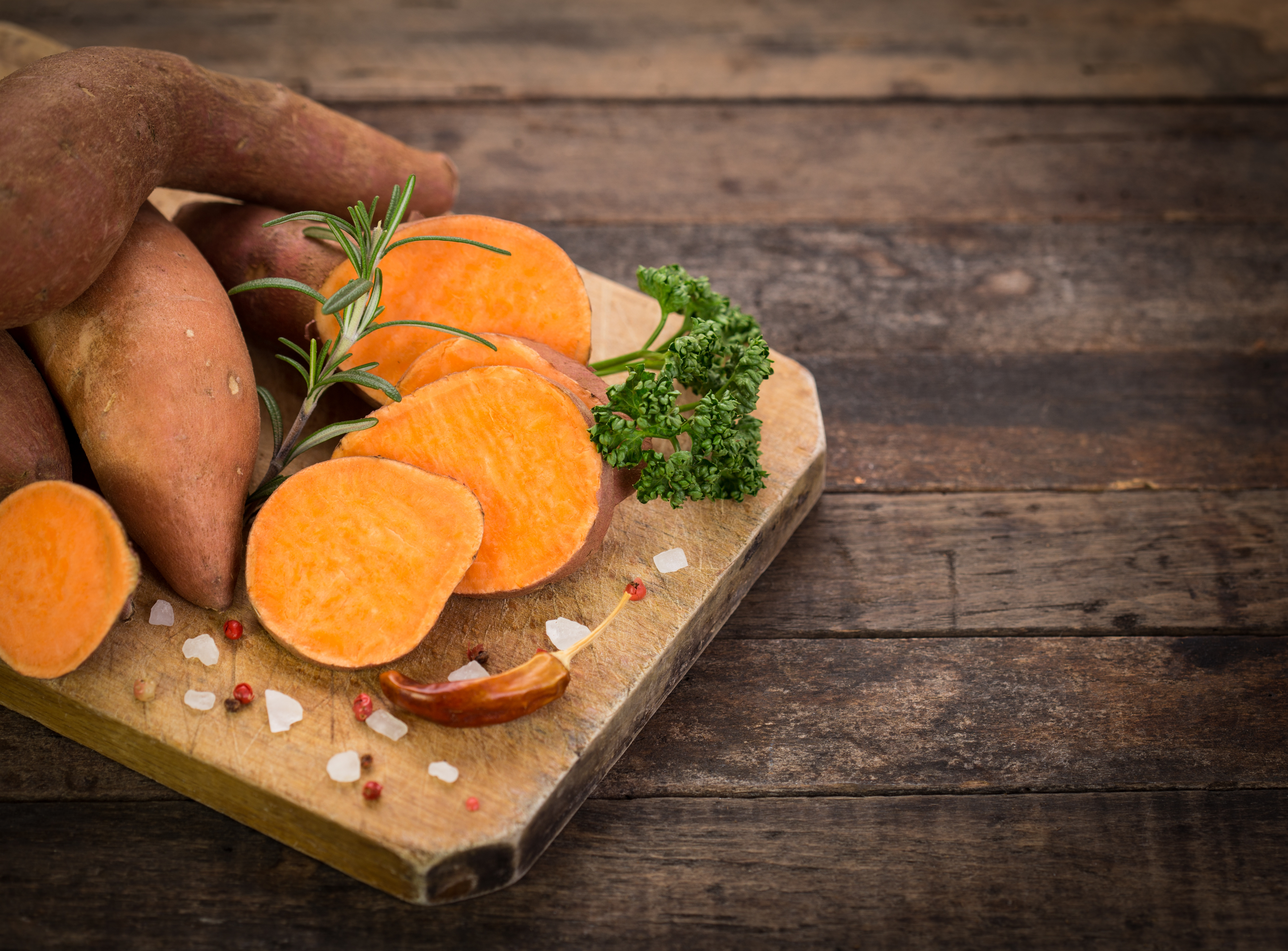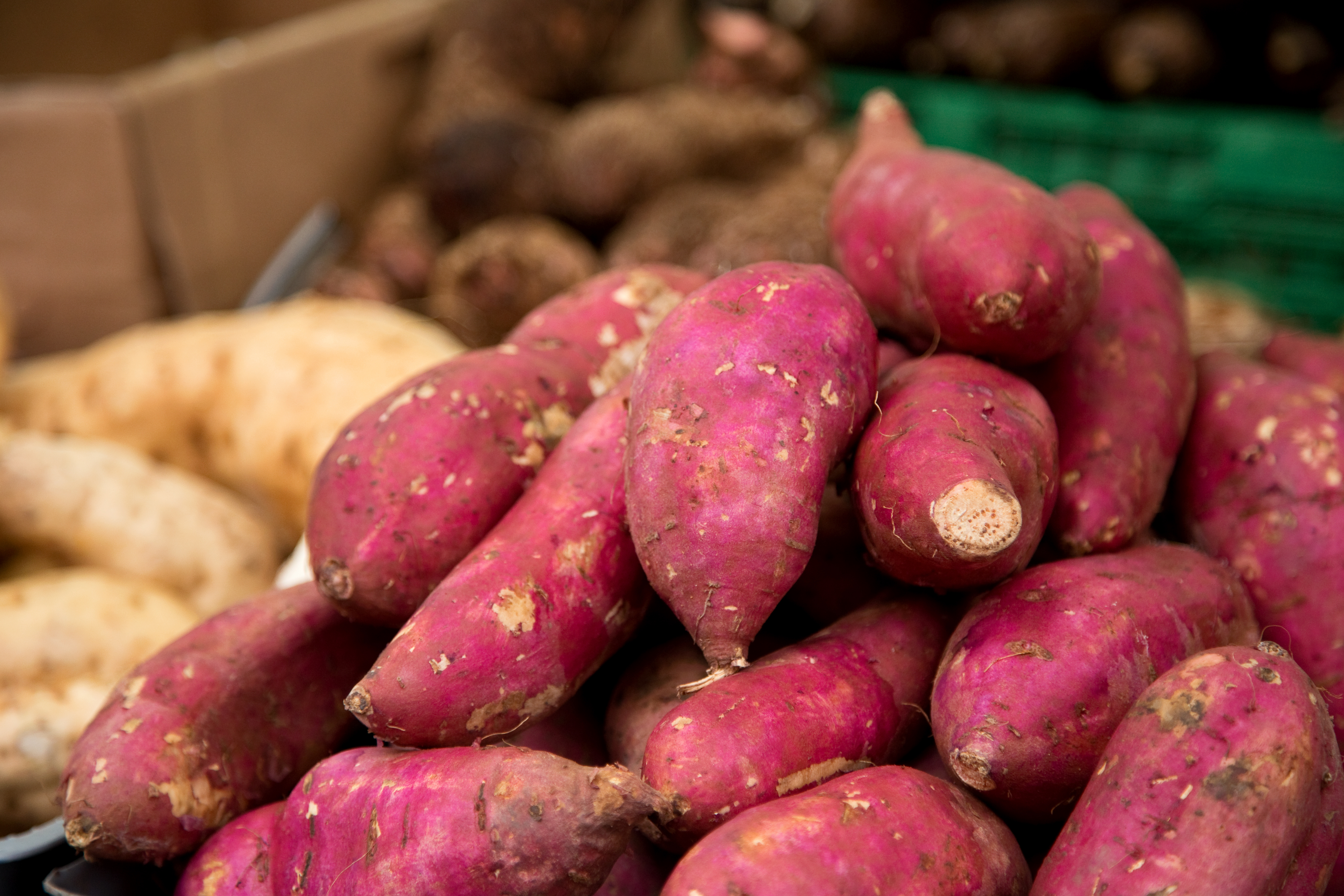The holidays are here and sweet potatoes are one of the most popular vegetables on the menu. Sweet potatoes are commonly labeled as yams when in reality they are most likely sweet potatoes. Many years ago the U.S. government decided to label sweet potatoes by their color to make things easier. The creamy white flesh ones are labeled sweet potatoes and the orange-fleshed ones are sometimes labeled yams. The USDA requires that sweet potatoes labeled as yams also be labeled as sweet potatoes. Chances are likely that you are buying sweet potatoes regardless of what the label says. Are you still confused about the difference between sweet potatoes and yams?
Sweet potatoes and yams are two totally different vegetables.
Yams are tubers and are usually found imported in ethnic markets in the United States. They are originally from Africa, where over 95% of the world’s crop is harvested, and Asia. Yams are grown in tropical climates and are very popular in Latin America and the Caribbean. A few varieties can grow up to 7 feet in length and weigh almost 200 pounds! The skin of a yam is rough and scaly and the taste is very starchy. Yams are toxic when raw and must be cooked to get rid of the toxins.
They are an extremely important part of the diet of the people in Nigeria and West Africa. Yams supply more than 200 calories per person per day for more than 150 million people in West Africa while also providing a necessary income for local farmers. Yams are high in vitamin C and B and potassium, and low in saturated fat and sodium. The flavor can sometimes be sweeter than a sweet potato depending on the variety.
Sweet Potatoes are thought to originate in either Central or South America at least 5,000 years ago. In the U.S. they are grown in temperate climate zones. North Carolina is the largest producer of sweet potatoes followed by California, Louisiana, and Mississippi. In California, 80% of the sweet potatoes are grown in Merced County followed by Fresno and Stanislaus County. When you sit down for the traditional American Thanksgiving dinner you will be eating sweet potatoes regardless of their color.
 Types of Sweet Potatoes
Types of Sweet Potatoes
There are 5 main types of sweet potatoes grown. The orange-flesh varieties become moist when cooked and the white-flesh varieties become dry when cooked with a crumbly texture similar to a baked white potato. The Garnet is the classic sweet potato that most people think of when making mashed sweet potatoes, pies, cakes and bread.
1. Red Skin/Orange Flesh
(Varieties include Dianas, Reds & Garnets)
2. Orange Skin/Orange Flesh
(Varieties include the Beauregard, Covington & Jewel)
3. White Skin/White Cream Flesh
(Varieties include the O’Henry, Jersey Sweet, Hannahs or Hannah Golds)
4. Red Skin/White Flesh
(Japanese Sweet varieties include Murasaki & Kotobuki-most commonly referred to as “Orientals.” Also referred to as Satsumaimo in Japan)
5. Red skin/Purple Flesh
(Purple Stokes)
Storing Sweet Potatoes
- Store sweet potatoes in a cool dark place.
- Don’t store them in the refrigerator! Refrigeration will make the center of the sweet potato hard and it will cook unevenly.
Sweet potatoes are relatively low in calories and have no fat. Rich in beta-carotene, they have five times the recommended daily allowance of Vitamin A in one sweet potato, as well as being loaded with potassium. These nutrients help to protect against heart attack and stroke. Purple sweet potatoes are particularly rich in antioxidants called anthocyanins, also found in blueberries and pomegranates. This compound is best known for boosting immunity and is thought to help fight cancer.
My favorite Japanese sweet potato recipe is Roasted Japanese Sweet Potatoes with Miso Scallion Butter. You will fall in love with Japanese Sweet potatoes if you haven’t already. One of Earl’s Organics’ customers raves about making hash browns with the Purple Stokes sweet potato. Share your favorite sweet potato recipe on our Facebook page.
Article courtesy of Earl’s Organic Produce.


 Types of Sweet Potatoes
Types of Sweet Potatoes




